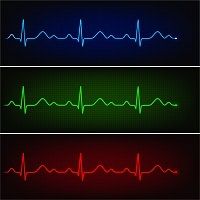Article
Heart Attack Test Misses
Author(s):
A commonly used sensitive Troponin detection test to confirm heart attacks is often not being used in a way that will consistently detect these events, a UK research team has found. Writing in the British Medical Journal, Zhivko Zhelev PhD, a diagnostics research fellow at the University of Exeter and colleagues reported on their meta-analysis of studies that assessed the accuracy of a widely used diagnostic test, the Elecsys Troponin T high-sensitivity assay.

A commonly used extremely sensitive Troponin detection test to confirm heart attacks is often not being used in a way that will consistently detect these events, a UK researcher team has found.
Writing in the British Medical Journal, Zhivko Zhelev PhD, a diagnostics research fellow at the University of Exeter and colleagues reported on their meta-analysis of studies that assessed the accuracy of a widely used diagnostic test. The team included all studies that evaluated the accuracy of Elecsys Troponin T high-sensitive assay (Roche Diagnostics) in detecting acute myocardial infarction in patients who arrived at emergency departments with suspected acute coronary syndrome.
It used to be that any patient suspected of having a heart attack would be admitted to the hospital for observation. But with pressure to reduce admissions, that is no longer true. Thus the accuracy of the test becomes more important, Zhelev wrote.For that reason, high-sensitivity troponin tests have evolved.
The team evaluated only the Roche Elecsys Troponin T high sensitivity test, though there are similar tests from other manufacturers.
They found that some physicians are getting false negatives because they are setting the threshold for a positive reading too high (14 ng/L). That means that with that cutoff point for a negative verdict, the results will be false negatives in 2 or 3 patients of 100 tested. But when a lower threshold (2 ng/L or 5 ng/L) is used, there will be at most 1 false negative—though the lower cutoff values will also likely result in more false positives, they wrote.
Relying solely on the test to diagnose a myocardial infarction is risky, they write.
The authors cite another study which found that when emergency physicians’ clinical judgment and the patient’s medical history and exam were factored in, despite any false negatives with Troponin assays, fewer cases were missed.
But they also feel the lower threshold for test results should always be used. “This method should be considered as part of a comprehensive triage strategy and may not be appropriate for patients presenting within the three hours after symptom onset,” they conclude.





